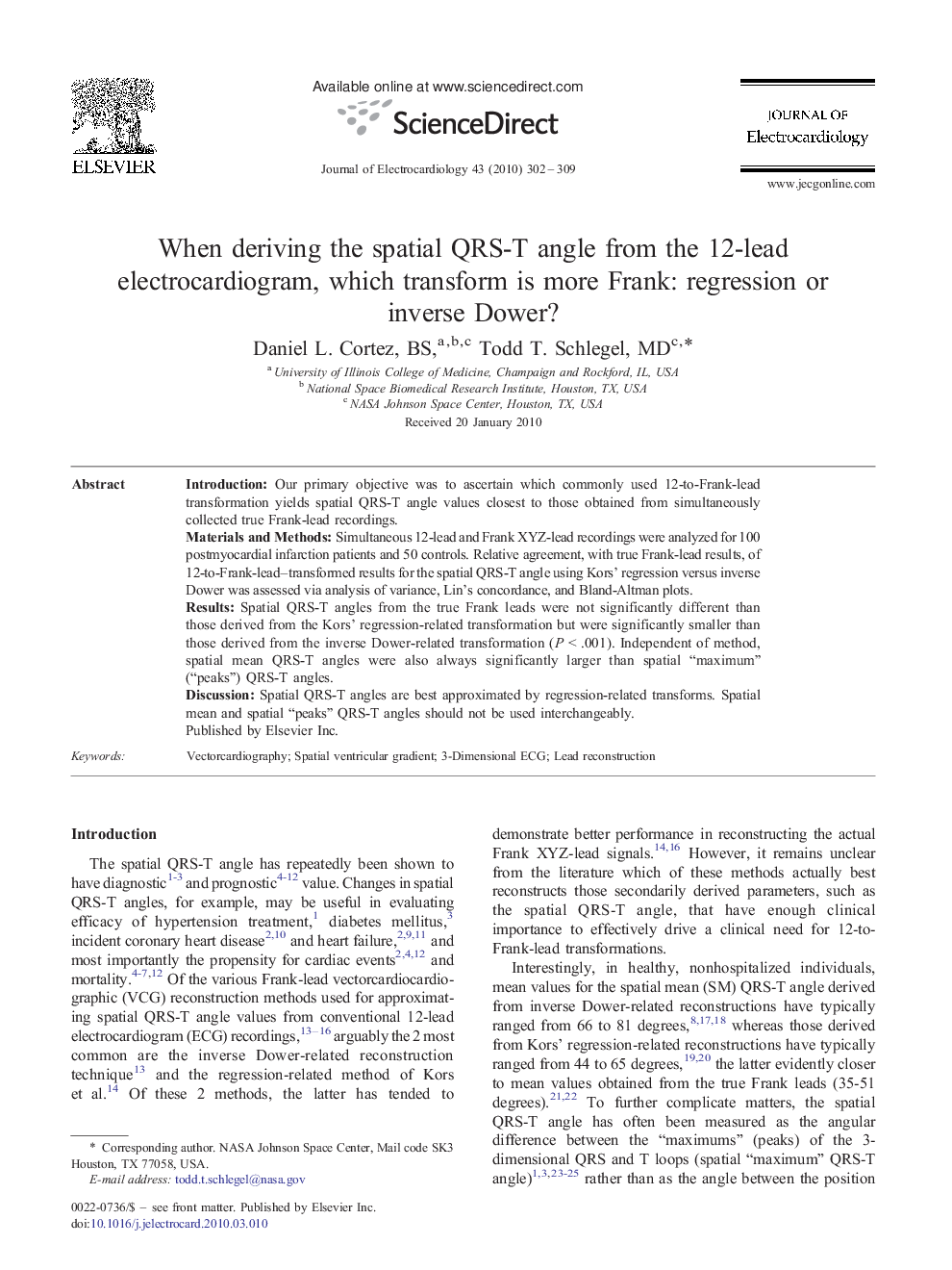| کد مقاله | کد نشریه | سال انتشار | مقاله انگلیسی | نسخه تمام متن |
|---|---|---|---|---|
| 2968273 | 1178872 | 2010 | 8 صفحه PDF | دانلود رایگان |

IntroductionOur primary objective was to ascertain which commonly used 12-to-Frank-lead transformation yields spatial QRS-T angle values closest to those obtained from simultaneously collected true Frank-lead recordings.Materials and MethodsSimultaneous 12-lead and Frank XYZ-lead recordings were analyzed for 100 postmyocardial infarction patients and 50 controls. Relative agreement, with true Frank-lead results, of 12-to-Frank-lead–transformed results for the spatial QRS-T angle using Kors' regression versus inverse Dower was assessed via analysis of variance, Lin's concordance, and Bland-Altman plots.ResultsSpatial QRS-T angles from the true Frank leads were not significantly different than those derived from the Kors' regression-related transformation but were significantly smaller than those derived from the inverse Dower-related transformation (P < .001). Independent of method, spatial mean QRS-T angles were also always significantly larger than spatial “maximum” (“peaks”) QRS-T angles.DiscussionSpatial QRS-T angles are best approximated by regression-related transforms. Spatial mean and spatial “peaks” QRS-T angles should not be used interchangeably.
Journal: Journal of Electrocardiology - Volume 43, Issue 4, July–August 2010, Pages 302–309